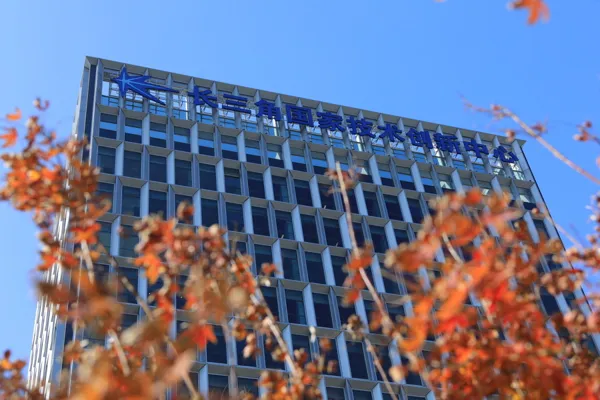110 cities have a 6-level olive-shaped structure, and the Yangtze River Economic Belt Cities Collaborative Development Capability Index was released
The Yangtze River Economic Belt covers 11 provinces and cities along the Yangtze River, accounting for "half of the country" in terms of population size and total economic output. Today, the China Modern Urban Research Center, a key research base for humanities and social sciences of the Ministry of Education, and the Urban Development Research Institute of East China Normal University released the "Collaborative Development Capability Index of Cities in the Yangtze River Economic Belt." The top ten cities with the strongest collaborative development capabilities are: Shanghai, Hangzhou, Nanjing, Chengdu, Wuhan, Suzhou, Wuxi, Chongqing, Hefei, and Changsha.
Since the implementation of my country's Yangtze River Economic Belt development strategy, the provinces and cities along the Yangtze River and relevant central departments have implemented the decisions and arrangements of the Party Central Committee, adhered to joint efforts in large-scale protection and not engaged in large-scale development, adhered to ecological priority and green development, solidly promoted the ecological and environmental protection and restoration of the Yangtze River, and actively Promote comprehensive green transformation of economic and social development. The coordinated development of cities in the Yangtze River Economic Belt is the support for the joint protection of the Yangtze River Economic Belt, and is also an important starting point for solving the development system problems of the Yangtze River Basin. To this end, the "Yangtze River Economic Belt Cities Collaborative Development Capability Index" has been released annually since 2015, and this year is the ninth time it has been released.
Coordinated development capability index scores of 110 cities at prefecture level and above
At the press conference, Professor Zeng Gang, chief expert in index development, director of the China Modern Urban Research Center, a key research base for humanities and social sciences of the Ministry of Education, and dean of the Urban Development Research Institute of East China Normal University, introduced that the index is based on regional coordinated development, regional innovation systems, Based on scientific theories such as regional development resilience and growth poles, an evaluation index system for the collaborative development capability index of cities in the Yangtze River Economic Belt has been constructed including four major areas: economic development, technological innovation, exchange services, and ecological support, and 18 specific indicators including GDP level; Using index calculation, spatial autocorrelation analysis, index trend analysis methods and prefecture-level city big data in the past three years, target values and thresholds were set against the highest standards and best levels of global cities, and the collaborative development capabilities of 110 cities in the Yangtze River Economic Belt were evaluated. A systematic review was conducted. This year, the index development team included the "Foreign Cooperation Index" in the 2023 evaluation indicator system, aiming to highlight the high-quality comprehensive development capabilities of the 110 cities in the Yangtze River Economic Belt and the importance of imbalanced development between cities.
The index research report shows that in terms of the coordinated development capabilities of cities in the Yangtze River Economic Belt, Shanghai ranks first with a score of 64.99, ranking first for 9 consecutive years and playing a significant leading role. Among the top ten cities in terms of collaborative development capabilities, Changsha has returned to the top ten again since 2020 due to its balanced development in all aspects.
Professor Zeng Gang analyzed that 110 cities at prefecture level and above exhibit six-level olive-shaped structural characteristics: Shanghai is the leading city; 10 cities such as Hangzhou, Nanjing, Chengdu, Wuhan, Suzhou, Wuxi, Chongqing, Hefei, Changsha, and Ningbo are High-level regional central cities with strong capabilities; 36 cities including Kunming, Changzhou, Guiyang, Zhoushan, and Nanchang are general regional central cities with outstanding performance in individual fields; 36 cities including Pu'er, Zigong, Chenzhou, Yibin, and Zhuzhou are regionally important cities. Cities are often located in more important locations or have unique resource endowments in some aspects; 15 cities including Bozhou, Bazhong, Ziyang, Tongling, and Fuyang are important local cities with room for improvement; Loudi, Meishan, Xiangtan, Huainan, and Xinyu The other 12 cities are ordinary cities with shortcomings or weak external service functions.
There are two major problems in the coordinated development capabilities of cities in the Yangtze River Economic Belt against world-class standards. First, ecological synergy capabilities have been enhanced, but shortcomings are still prominent. Judging from the average scores of the top 10 cities in the four major fields, the economy scored 47.48 points, the science and technology innovation score was 32.76 points, the delivery service score was 65.80 points, and the ecology score was only 23.49 points. Shanghai, the leading city, has approached or reached the world's advanced level in the three major areas of economic development, technological innovation, and exchange services, but its score in the field of ecological support is still relatively low.
Score chart of collaborative development capability index of cities in the upper, middle and lower reaches of the Yangtze River
The second problem is that the collaborative development capabilities of urban subgroups are highly differentiated. The lower reaches of the Yangtze River are areas with high value for coordinated development capabilities, while the opposite is true for the middle and upper reaches. From the perspective of urban sub-groups, the overall level of synergy of the Yangtze River Delta urban agglomeration is relatively high. The overall collaborative development capability index scores of the Su-Wuxi-Chang city sub-group, Nanjing city sub-group, Hangzhou city sub-group, Ningbo city sub-group and Hefei city sub-group are much higher. In the Wuhan city subgroup, the Poyang Lake city subgroup, the Changzhutan city subgroup, and the Chengdu city subgroup. This shows that promoting the coordinated development of the middle and lower reaches of the Yangtze River Economic Belt is still a major issue that needs to be solved.
In response to the real bottlenecks and shortcomings of regional development, Zeng Gang suggested launching five major actions: focusing on building an ecological community of the Yangtze River, strengthening the effective protection of ecological space, and protecting "a river with clear water flowing eastward"; vigorously developing the green economy of the Yangtze River and promoting industry Green economic transformation, improve the promotion mechanism of ecological product value realization and ecological protection compensation mechanism; solidly build an innovation community, strengthen cross-regional coordination of technological innovation and industrial innovation, and create strategic emerging industry integration clusters, digital economy and real economy integration industry clusters; Build an open community, enhance the status of opening to the outside world, smooth and efficient domestic circulation, and create a new pattern of dual circulation development; optimize the regional collaborative integration governance system, break administrative barriers between different types of cities, and promote the coordinated development of large, medium and small cities.





